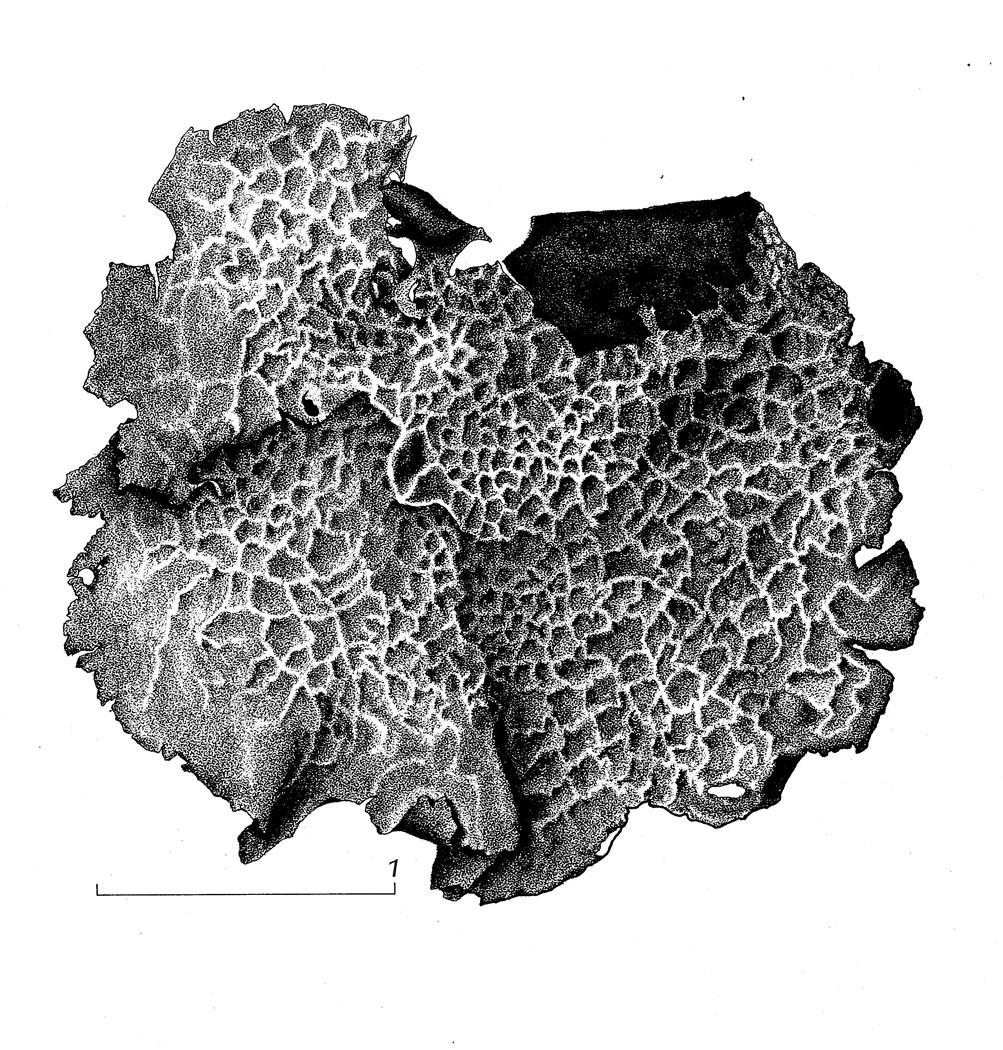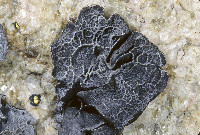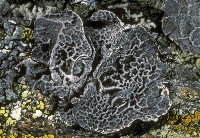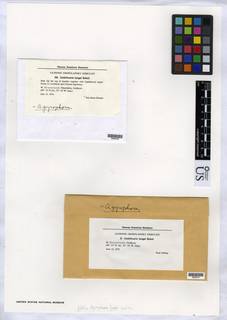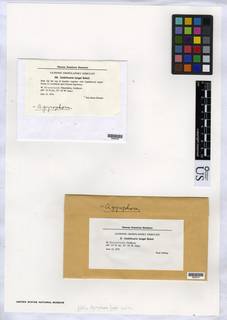
- Home
- Search
- Images
- Species Checklists
- US States: O-Z >
- US National Parks
- Central America
- South America
- US National Parks
- Southern Subpolar Region
|
|
|
|
Family: Umbilicariaceae
[Agyrophora lyngei (Schol.) Llano] |
Thompson, J., 1997. American Arctic Lichens: The Microlichens. Thallus umbilicate, to 3.5 cm broad, monophyllus, the margins thin, torn, or incised, umbo reticulate, the reticulations fading marginally; upper side dull, dark brown to brown-black with frosty pruina over the umbo; underside smooth, sooty black or with paler patches, marginally with a pruinose-granular band. Thallus 300 µ thick, upper cortex about 40 µ, medulla about 83 µ, lower cortex about 66 µ. Apothecia rare, stipitate, to 2 mm broad; disk black, flat; paraphyses unbranched, septate, tips capitate, to 3.4 µ; spores simple, hyaline, 4.9-7 X 9.8-14 µ. Reactions: K-, C-, KC-, P-. Contents: Hale (1956) reported gyrophoric acid. This was not confirmed by Krog (1973) who reported traces of norstictic acid only with TLC. I did not find any gyrophoric acid in my material. This species is reported to be not associated with bird droppings. It is high arctic-alpine but not in the European Alps. In North America its range is high northern but with outliers into Oregon and on the island of Anticosti in the Gulf of St. Lawrence.
Thompson, J., 1984. American Arctic Lichens: The Macrolichens. Thallus umbilicate, to 3.5 cm broad, monophyllus, the margins thin, torn, or incised, umbo reticulate, the reticulations fading marginally; upper side dull, dark brown to brown-black with frosty pruina over the umbo; underside smooth, sooty black or with paler patches, marginally with a pruinose-granular band. Thallus 300 µ thick, upper cortex about 40 µ, medulla about 83 µ, lower cortex about 66 µ. Apothecia rare, stipitate, to 2 mm broad; disk black, flat; paraphyses unbranched, septate, tips capitate, to 3.4 µ spores simple, hyaline, 4.9-7 x9.8-14 µ. Reactions: K — , C — , KC — , P — . Contents: Hale (1956) reported gyro-phoric acid. This was not confirmed by Krog (1973) who reported traces of norstictic acid only. |

